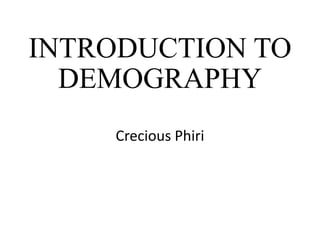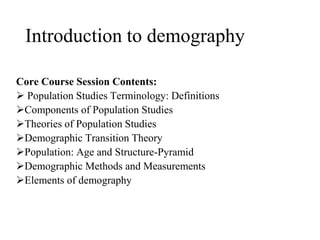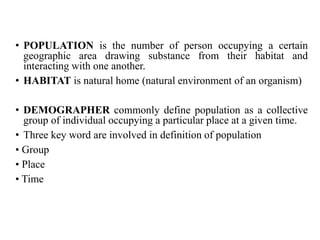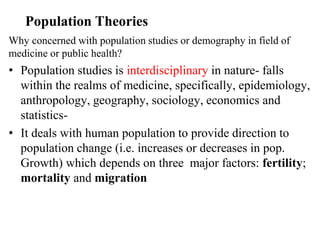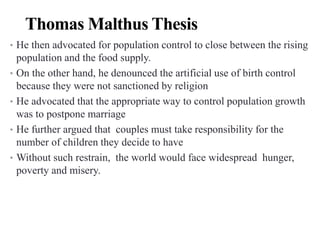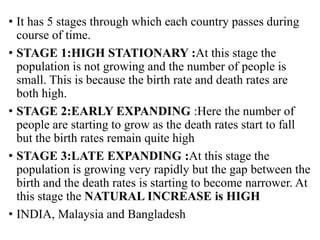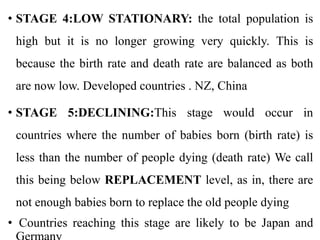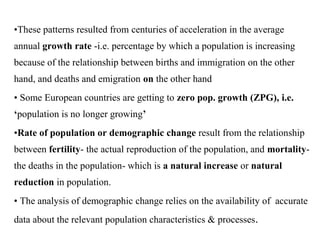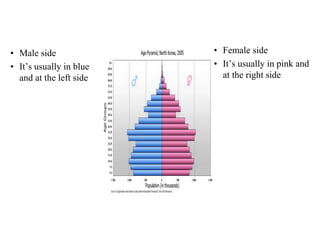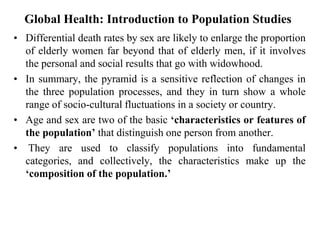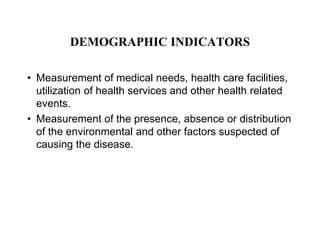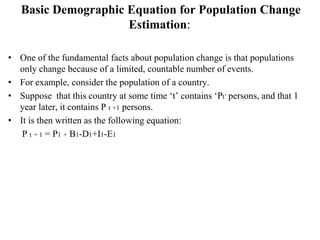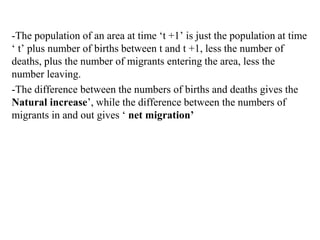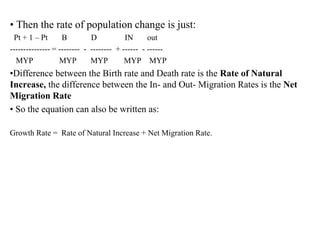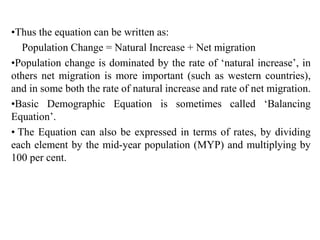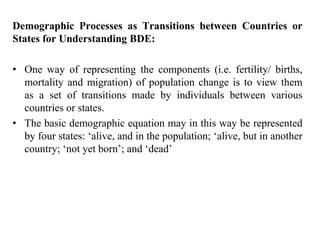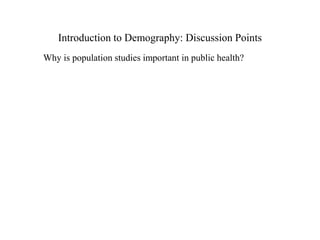This document provides an introduction to demography and population studies. It defines key terminology like population, demography, and habitat. It discusses the components of population studies including changes in size, composition, and distribution. It also covers population theories like Malthusian and Marxist theories. The document explains demographic transition theory and how populations progress through 5 stages. It demonstrates how to construct a population pyramid and analyze population age and sex structures. Finally, it discusses demographic methods and measurements like vital registration systems and how demographic data is collected and analyzed.
